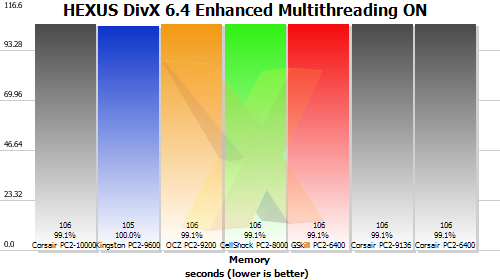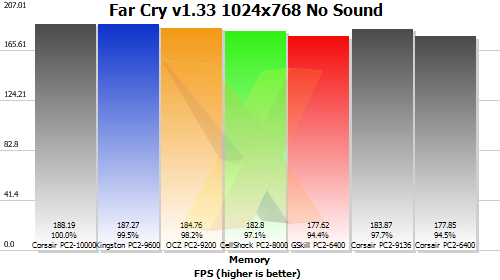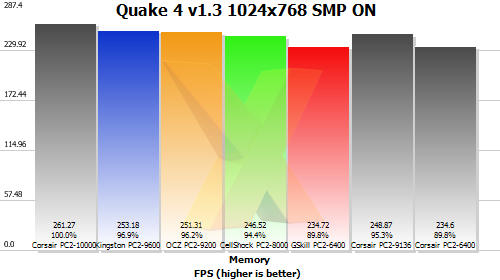DivX and gaming benchmarks



The HEXUS DivX 6.4 Multithreading test clearly cares little for memory bandwidth. All modules score identically except the Kingston HyperX PC2-9600 and that only took one second less to complete that the other modules did. Whether this is down to the Kingston's slightly lower latency or just testing variance is uncertain.
Gaming, though, does allow the various modules to
differentiate themselves. Far Cry sees an 11fps span between the
highest and lowest
results, although all systems are so far above 60fps that the
difference in
real terms would be imperceptible.
Quake 4 shows an even more dramatic 27fps variance but when
the worst result is 234.6fps, this isn't overly important.
As resolution and filter levels were increased, the GPU
would likely have become the limiting factor,
with memory less
influential in the benchmarking results.
Summary
The synthetic tests, even in terms of latency, generally favour the higher-speed parts.
DivX appears to be limited by another component in the system but, in the gaming benchmarks, the modules with lower clock speeds and lower latencies fall behind their higher-speed, higher-latency competitors.
However, all modules offer a level of performance where even a 10 per cent differential between the best and worst results would not be noticeable.
And, as resolution and detail-levels increase, memory is less likely to be the main bottleneck in overall performance.


